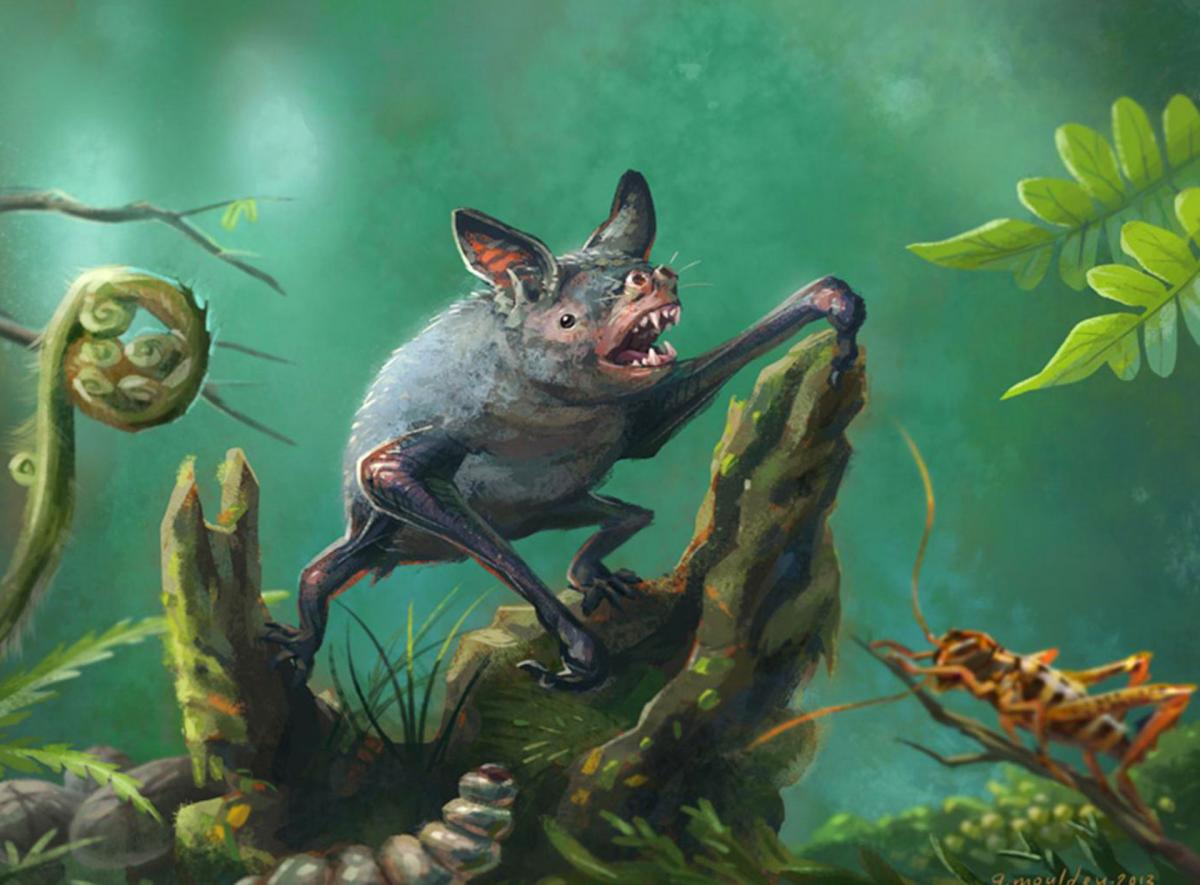Vulcanops jennyworthyae: Giant New Species of Burrowing Bat

Burrowing bats (family Mystacinidae) are only found now in New Zealand, but they once also lived in Australia.
They are peculiar because they not only fly; they also scurry about on all fours, over the forest floor, under leaf litter and along tree branches, while foraging for both animal and plant food.
“Burrowing bats are more closely related to bats living in South America than to others in the southwest Pacific,” said Professor Sue Hand, from the University of New South Wales in Australia.
“They are related to vampire bats, ghost-faced bats, fishing and frog-eating bats, and nectar-feeding bats, and belong to a bat superfamily that once spanned the southern landmasses of Australia, New Zealand, South America and possibly Antarctica.”
The newly found fossil bat, named Vulcanops jennyworthyae, was relatively large, with an estimated body mass of 40 g.
It fossilized remains (teeth and bones) were recovered from freshwater lake sediments (16-19 million years old) near St Bathans, Central Otago, South Island.
“New Zealand’s burrowing bats are renowned for their extremely broad diet. They eat insects and other invertebrates such as weta and spiders, which they catch on the wing or chase by foot. And they also regularly consume fruit, flowers and nectar,” Professor Hand said.
“However, Vulcanops jennyworthyae’s specialized teeth and large size suggest it had a different diet, capable of eating even more plant food as well as small vertebrates — a diet more like some of its South American cousins. We don’t see this in Australasian bats today.”
“The fossils of this spectacular bat and several others in the St Bathans Fauna show that the prehistoric aviary that was New Zealand also included a surprising diversity of furry critters alongside the birds,” said Dr. Trevor Worthy of Flinders University.
“These bats, along with land turtles and crocodiles, show that major groups of animals have been lost from New Zealand,” added Professor Paul Scofield of Canterbury Museum.
“They show that the iconic survivors of this lost fauna — the tuataras, moas, kiwi, acanthisittid wrens, and leiopelmatid frogs — evolved in a far more complex community that hitherto thought.”
This diverse fauna lived in or around a 5,600-km2 prehistoric Lake Manuherikia that once covered much of the Maniototo region of the South Island. When they lived, temperatures in New Zealand were warmer than today and semitropical to warm temperate forests and ferns edged the vast paleolake.
“Vulcanops jennyworthyae provides new insight into the original diversity of bats in Australasia,” the paleontologists said.
“Its lineage became extinct sometime after the Early Miocene, as did a number of other lineages present in the St Bathans assemblage.”
“These include crocodiles, terrestrial turtles, flamingo-like palaelodids, swiftlets, several pigeon, parrot and shorebird lineages and non-flying mammals. Most of these were probably warm-adapted species.”
“After the middle Miocene, global climate change brought colder and drier conditions to New Zealand, with significant changes to vegetation and environments.”
“It is likely that this general cooling and drying trend drove overall loss in bat diversity in New Zealand, where just two bat species today comprise the entire native land mammal fauna.”
The team’s findings are published in the journal Scientific Reports.
_____
Suzanne J. Hand et al. 2018. A new, large-bodied omnivorous bat (Noctilionoidea: Mystacinidae) reveals lost morphological and ecological diversity since the Miocene in New Zealand. Scientific Reports 8, article number: 235; doi: 10.1038/s41598-017-18403-w
Source: www.sci-news.com








